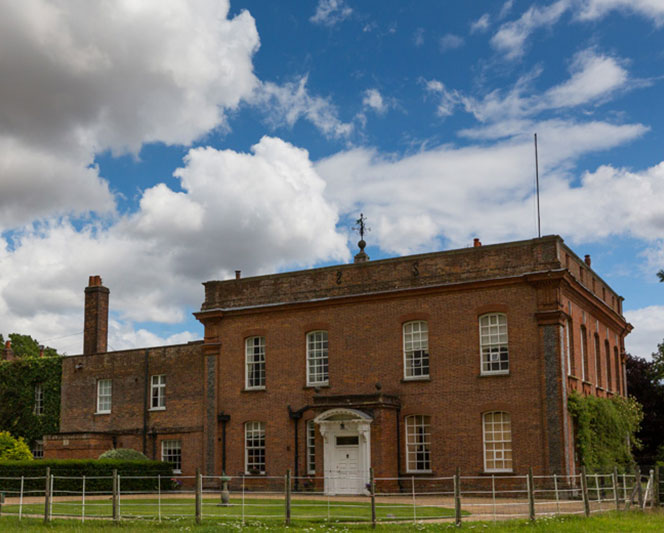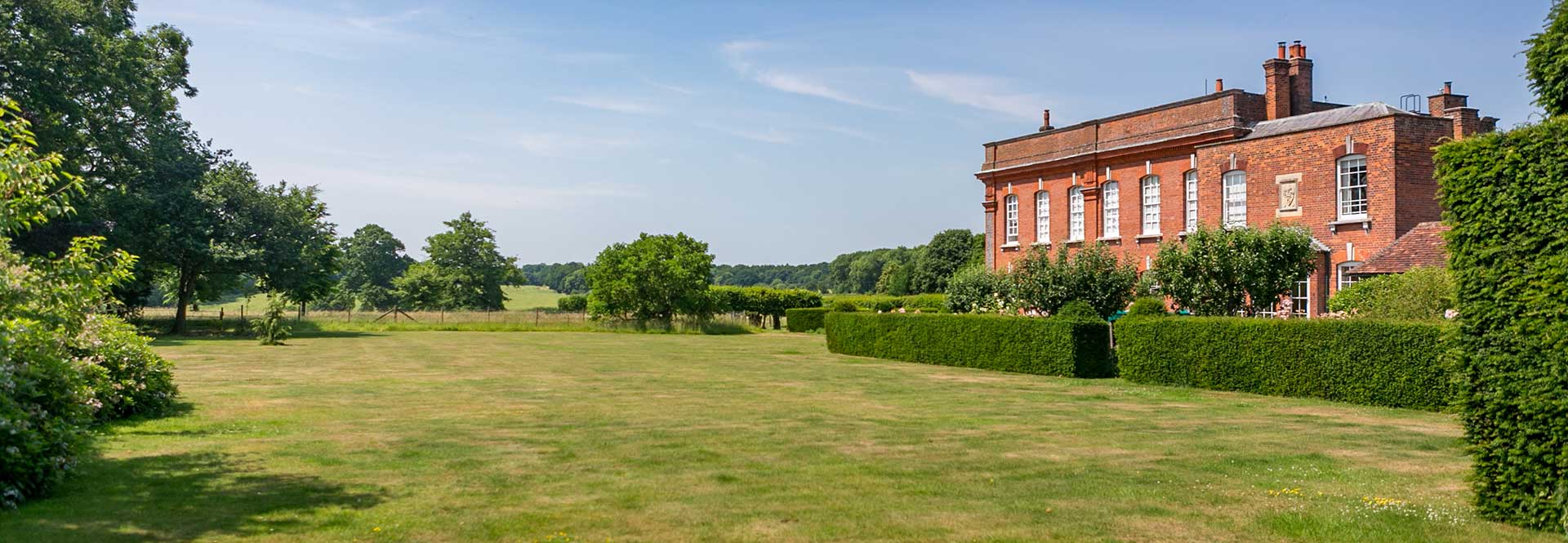Farming
The culmination of the farming year is upon us. This harvest has been somewhat different to the intense heat and dry of last year, and as I write this we are only about half way through. By this time last year we had been done and dusted for a couple of weeks.
We started harvest on 28th July with the Oilseed Rape along Gaddesden Row. This crop had looked well all year, and the majority of it did well. However there were a couple of poor fields where the pigeons had attacked it over the winter, which brought the overall yield down below our long term average. Overall it did about 3.2 tonnes per hectare, which is respectable if not exciting. After drying, all of this has been moved from the farm into a merchants store, and we await the results of testing for the percentage of oil in the grain which determines its value, along with how clean and dry it is.
Wet weather and high humidity makes it impossible to combine the crops, and so far it has been a case of snatching every available opportunity to get some done, before it rains again. There is a compromise of course between waiting for the grain to dry after rain, and having enough time to get it harvested before the next band of rain makes it impossible. We are very lucky to have an excellent harvesting contractor who has the biggest combine you can get, and this means that we can make the most of every weather window when he is here. The result though is that grain is often comes into the shed dry enough to go though the combine, but too wet to sell or store long term. We then have to dry it, and so far this year the drying fans have been running constantly.
The next crop to go was our Organic wheat on 10th August, which was an exciting moment. As our first organic crop it was difficult to know what to expect, but so far things seems to have gone well. Yields were better than expected, at about 5.5 tonnes per ha, though this may have something to do with the fact that the fields we grew it on were the ones closest to the farm, and therefore generally the most fertile having received manure for generations from the days of having our own livestock. Protein levels were low however, which is a trade off with higher yield, and we await the merchant’s view on the likely end market.
I had expected the stubbles to be green with weed growth after the combine had been through, and had planned to put sheep on them. To my surprise they were in fact extremely clean, it was difficult to tell the difference between them and a conventional crop. As a result we haven’t put sheep on them yet, but have lightly cultivated to help any shed seeds germinate, and help them green up over winter. The clean stubbles enabled us to bale the straw, and for the first time in years the dutch barn at the farm is storing organic wheat straw. We remove the straw to help the following crop, as whilst the straw does contain valuable nutrients, it also takes nitrogen and energy to decompose, which will hold the following crop back. Those nutrients though will be returned through our rotation of the crops and the application of manure.
Next to go was our wheat and bean mixture for Wildfarmed. Much to everyone’s surprise this went through the combine just fine, and produced a relatively clean sample. Combines these days are so sophisticated that you tell is what crop you are harvesting, and it adjusts itself to what it thinks are the ideal settings. A wheat and bean mixture, where the wheats consist of four different varieties all of which are different heights, is most definitely not on the combine’s default settings, but anyway all was well in the end! The next job will be to separate the wheat and beans once the rush of harvest is over, and for this we have been re-commissioning and re-siting our 1960s grain cleaner (we still have the original brochure… ). We haven’t tried it yet, but hopefully I will be able to report progress next time.
We have not yet harvested any of our conventional wheat or conventional beans, but hope to do so over the next week or so.
Escaped Cattle
Many in the parish may be aware that a group of longhorn cattle belonging to our grazier Marbled Meats escaped from the Water Meadows on 12th July, having been chased into a corner and spooked by out-of-control dogs in the care of a commercial dog walker. Thankfully all cattle have now safely been recovered, but the last animal avoided capture for a month, living largely out of sight in the unharvested oilseed rape and wheat by Gaddesden Row. As readers will be able to imagine, this was an extremely stressful situation for all concerned, most particularly the cattle themselves. If this becomes more common the only option may be the separation of the footpaths from the remainder of the water meadows with dog proof fencing, though of course nobody wants this.
Works to the River Gade
The proposed works to the river Gade between the two bridges in Water End bridges appear to have postponed for another year whilst Affinity get their paperwork and various permissions in order. There is not much to report here, although they do plan to remove some ivy to the south bridge by the Red Lion shortly to allow repairs to take place. We may know more by next month, but as things stand I think it unlikely much more will happen this year.
GFJH
The culmination of the farming year is upon us. This harvest has been somewhat different to the intense heat and dry of last year, and as I write this we are only about half way through. By this time last year we had been done and dusted for a couple of weeks.
We started harvest on 28th July with the Oilseed Rape along Gaddesden Row. This crop had looked well all year, and the majority of it did well. However there were a couple of poor fields where the pigeons had attacked it over the winter, which brought the overall yield down below our long term average. Overall it did about 3.2 tonnes per hectare, which is respectable if not exciting. After drying, all of this has been moved from the farm into a merchants store, and we await the results of testing for the percentage of oil in the grain which determines its value, along with how clean and dry it is.
Wet weather and high humidity makes it impossible to combine the crops, and so far it has been a case of snatching every available opportunity to get some done, before it rains again. There is a compromise of course between waiting for the grain to dry after rain, and having enough time to get it harvested before the next band of rain makes it impossible. We are very lucky to have an excellent harvesting contractor who has the biggest combine you can get, and this means that we can make the most of every weather window when he is here. The result though is that grain is often comes into the shed dry enough to go though the combine, but too wet to sell or store long term. We then have to dry it, and so far this year the drying fans have been running constantly.
The next crop to go was our Organic wheat on 10th August, which was an exciting moment. As our first organic crop it was difficult to know what to expect, but so far things seems to have gone well. Yields were better than expected, at about 5.5 tonnes per ha, though this may have something to do with the fact that the fields we grew it on were the ones closest to the farm, and therefore generally the most fertile having received manure for generations from the days of having our own livestock. Protein levels were low however, which is a trade off with higher yield, and we await the merchant’s view on the likely end market.
I had expected the stubbles to be green with weed growth after the combine had been through, and had planned to put sheep on them. To my surprise they were in fact extremely clean, it was difficult to tell the difference between them and a conventional crop. As a result we haven’t put sheep on them yet, but have lightly cultivated to help any shed seeds germinate, and help them green up over winter. The clean stubbles enabled us to bale the straw, and for the first time in years the dutch barn at the farm is storing organic wheat straw. We remove the straw to help the following crop, as whilst the straw does contain valuable nutrients, it also takes nitrogen and energy to decompose, which will hold the following crop back. Those nutrients though will be returned through our rotation of the crops and the application of manure.
Next to go was our wheat and bean mixture for Wildfarmed. Much to everyone’s surprise this went through the combine just fine, and produced a relatively clean sample. Combines these days are so sophisticated that you tell is what crop you are harvesting, and it adjusts itself to what it thinks are the ideal settings. A wheat and bean mixture, where the wheats consist of four different varieties all of which are different heights, is most definitely not on the combine’s default settings, but anyway all was well in the end! The next job will be to separate the wheat and beans once the rush of harvest is over, and for this we have been re-commissioning and re-siting our 1960s grain cleaner (we still have the original brochure… ). We haven’t tried it yet, but hopefully I will be able to report progress next time.
We have not yet harvested any of our conventional wheat or conventional beans, but hope to do so over the next week or so.
Escaped Cattle
Many in the parish may be aware that a group of longhorn cattle belonging to our grazier Marbled Meats escaped from the Water Meadows on 12th July, having been chased into a corner and spooked by out-of-control dogs in the care of a commercial dog walker. Thankfully all cattle have now safely been recovered, but the last animal avoided capture for a month, living largely out of sight in the unharvested oilseed rape and wheat by Gaddesden Row. As readers will be able to imagine, this was an extremely stressful situation for all concerned, most particularly the cattle themselves. If this becomes more common the only option may be the separation of the footpaths from the remainder of the water meadows with dog proof fencing, though of course nobody wants this.
Works to the River Gade
The proposed works to the river Gade between the two bridges in Water End bridges appear to have postponed for another year whilst Affinity get their paperwork and various permissions in order. There is not much to report here, although they do plan to remove some ivy to the south bridge by the Red Lion shortly to allow repairs to take place. We may know more by next month, but as things stand I think it unlikely much more will happen this year.
GFJH


